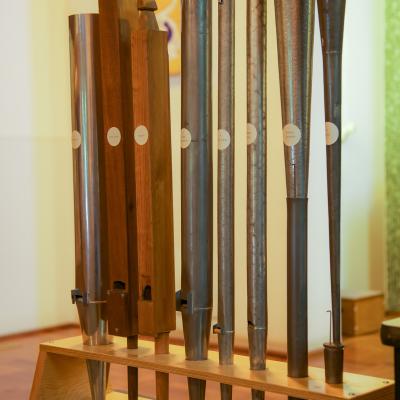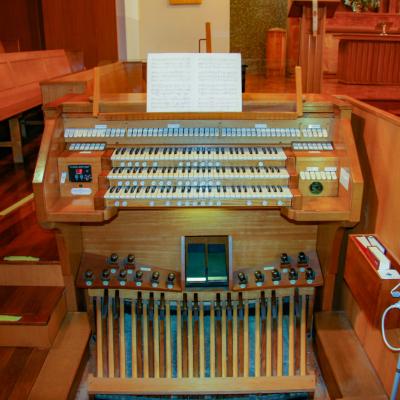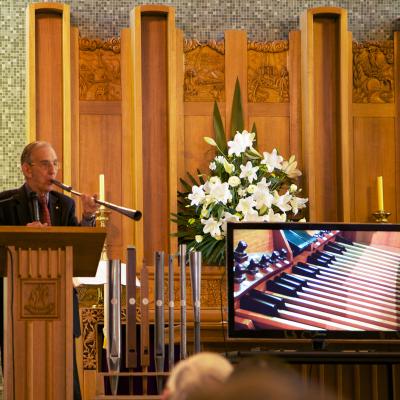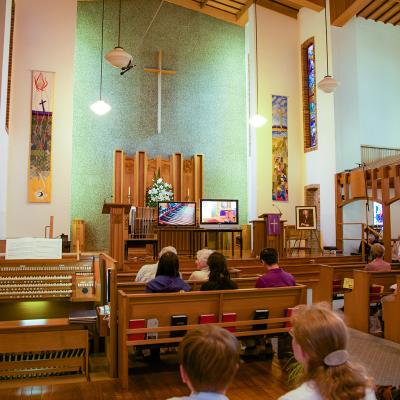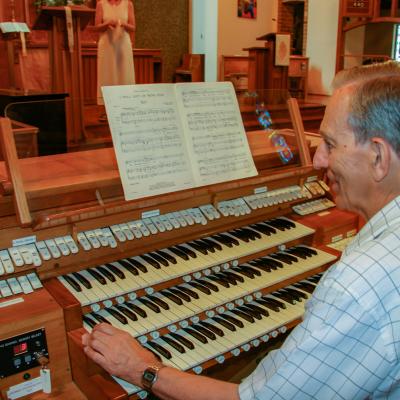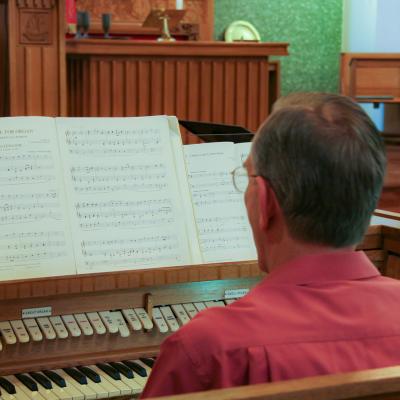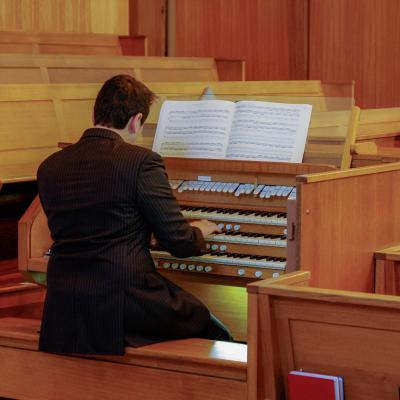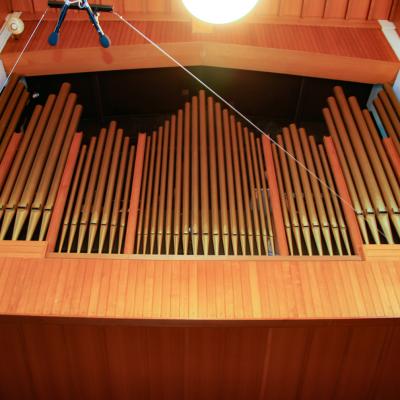The Organ in Wesley Uniting ChurchNational Circuit, Forrest, Australian Capital Territory"The organ has always been considered, and rightly so, the king of musical instruments, because it takes up all the sounds of creation and gives resonance to the fullness of human sentiments, from joy to sadness, from praise to lamentation. By transcending the merely human sphere, as all music of quality does, it evokes the divine. The organ’s great range of timbre, from piano through to a thundering fortissimo, makes it an instrument superior to all others. It is capable of echoing and expressing all the experiences of human life. The manifold possibilities of the organ in some way remind us of the immensity and the magnificence of God." (Pope Benedict XVI at the blessing of a new organ in Regensburg, September, 2006 ) HeritageThe original Church on the site in National Circuit, Forrest was opened in 1930, but it did not possess a pipe organ. In 1955 a new Church was built and the original Church became Wesley Hall.
The new Church incorporated a pipe organ built by George Fincham and Sons of Melbourne. It was a small extension organ of two manuals and 9 ranks. It had electro-pneumatic action and some 30 stops were derived from 5 ranks on the Swell Organ and 4 ranks on the Great Organ. Both divisions were enclosed in separate expression boxes. In the mid 1970s plans were developed for the enlargement of the organ as a comprehensive instrument for the performance of music from all the great periods of organ composition. The objective was a specification designed to achieve tonal balance and integration in accordance with sound principles of organ construction. A leading member of our Church, John Bathgate (1915-1982), acquired pipes and soundboards that had been part of a fine Alfred Hunter 3 manual organ in Burwood Methodist Church, Sydney. This organ was built in 1891-93 by Alfred Hunter and Son, of High Street, Clapham, near London. It had 33 ranks and was widely acclaimed. Because of damage caused when and after the organ was dismantled following sale of the Church, it was not possible to restore all the ranks. However, 14 complete ranks, a total of around 820 pipes and two soundboards from the Burwood, were incorporated into an enlarged organ. Fortunately these represented significant, distinctive and recognisable elements of the Hunter organ, including major choruses from the Great and Swell. It is not surprising that the Fincham and Hunter pipes are a good match. George Fincham knew Alfred Hunter well and in fact visited his factory in London. He studied his organ building methods and was quick to consult Hunter on any new developments and techniques in the profession. The Hunter Pipesincorporated in the Wesley rebuild are:
John Bathgate also acquired 9 ranks and a soundboard for a third manual Positive Organ from Gustav Bier of Giengen, near Ulm, in Germany. This firm had been engaged in organ building since 1515 and had developed a reputation for fine restoration work on 18th century organs in Germany and Switzerland. In 1981 George Stephens of Adelaide was commissioned to refurbish the Hunter soundboards which have been left unchanged in the latest rebuild. Other work in putting together the pipework from different sources was undertaken by volunteers under the guidance of several organ builders. The enlarged organ was dedicated to the memory of John Bathgate on 29 May 1983, although much work remained to be done to complete the organ to the proposed specification. The George Stephens RebuildGeorge Stephens developed an international reputation for the quality of his pipe organ voicing and restoration work generally. He gained his experience in working for the organ building firms of Rushworth and Dreaper in the UK and Hill, Norman and Beard and Steve Laurie in Melbourne. He commenced his own business with brother John in Melbourne in 1975 and then moved to Adelaide in 1979 taking over Gunstar Organ Works. From 1999 George Stephens took charge of planning a comprehensive rebuild of the Wesley organ. The objective was to restore the Hunter ranks to their original sound with correct wind pressure and pitch, to bring about effective tonal integration in the enhanced acoustic environment of the church and bring the total instrument up to the highest international standards for liturgical and recital purposes. Over the years from 1983 to 2002 significant changes were made to improve the church acoustics. These were undertaken in six stages involving replacement of acoustic tiles on the ceiling and on cladding across main ceiling beams and the placement of diffusing panels on walls in the chapel and at the rear of the church. The result was dramatically improved reverberation times and acoustic quality and balance. Rebuilding of the organ began in 2000. Major work on restoration, revoicing and electrical and mechanical systems was undertaken in 2001. The final stage was completed in August 2002. Key features of the rebuild were: A complete revoicing of Great and Swell ranks in the Adelaide factory.
The rebuilt organ was re-dedicated on 1 September, 2002 In 2006 Ian Brown and Associates took over the regular maintenance of the organ from George Stephens. In August 2006, Ian and Jennifer Brown installed three additional Pedal stops (stops 1,2 and 3 in the specification) to complete the tonal balance. This was desirable because the placement of the Open Diapason 16ft meant they could not be heard evenly and loud enough throughout the nave of the Church, due to standing waves. The successful solution was the addition of high quality Peterson electronic low notes using four speakers high in the Swell box. The additional sounds have transformed the f and ff dynamics for church services and concert performances. The Contra Violone is a very useful soft stop. To get more detailled information see The Wesley Organ Specification
|
|||||||||||||||||||||||||||||||||||||||||||||||||||||||||||||||||||
Addresses
Wesley Music Centre
Street: 20 National Circuit, Forrest, ACT 2603
Postal: PO Box 3217, Manuka, ACT 2603
Office Hours:
Tue - Fri, 10am to 3pm
phone: (02) 6232 7248
Click here to email us
Street: 20 National Circuit, Forrest, ACT 2603
Postal: PO Box 3217, Manuka, ACT 2603
Office Hours:
Tue - Fri, 10am to 3pm
phone: (02) 6232 7248
Click here to email us

